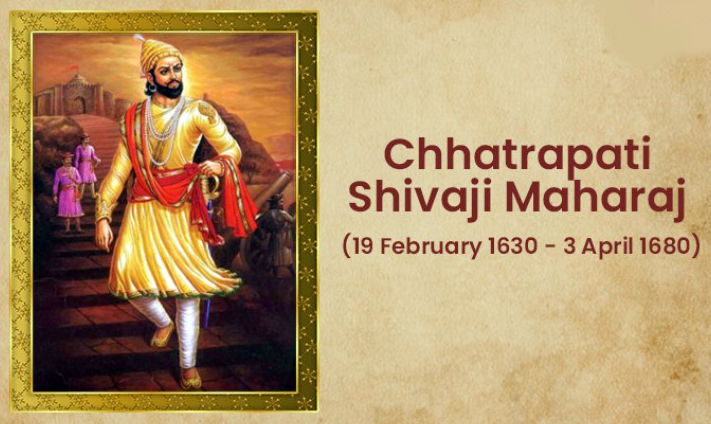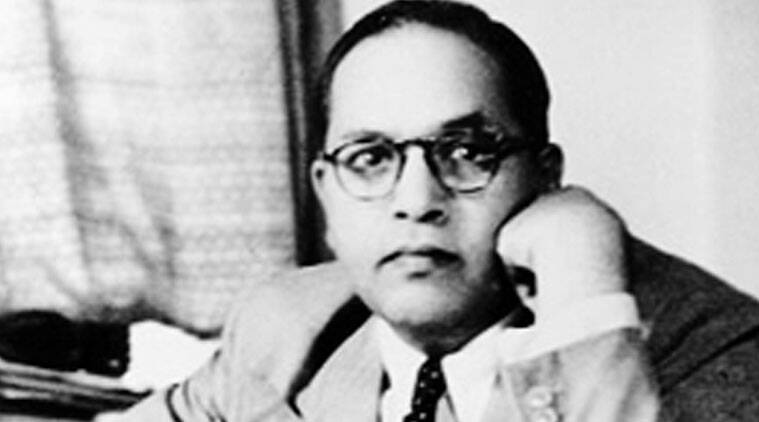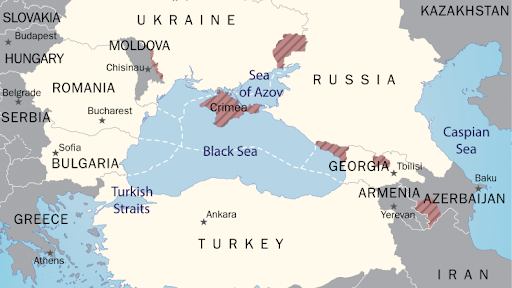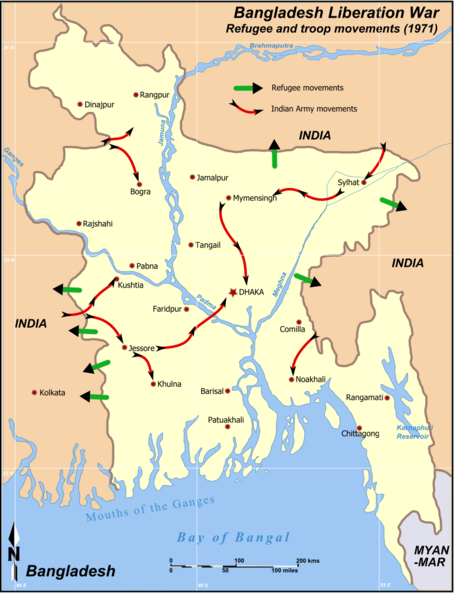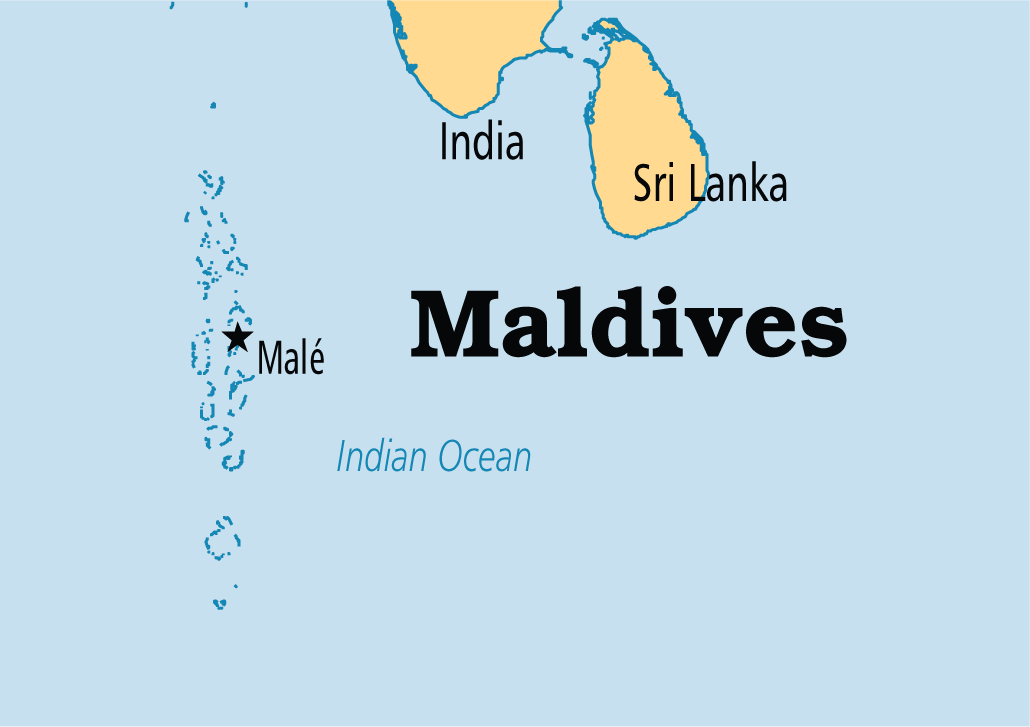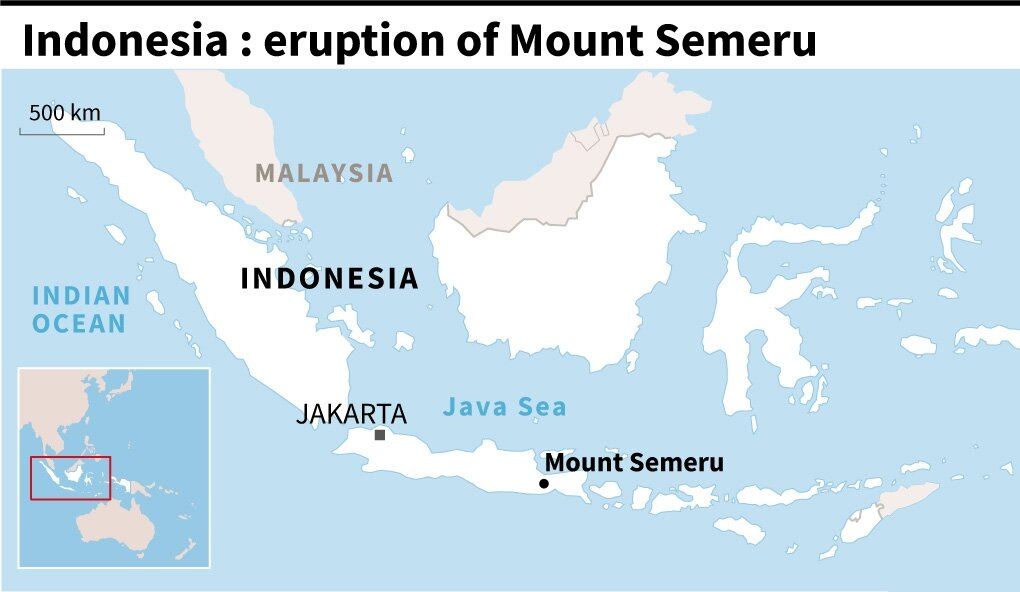Indian History
Chhatrapati Shivaji Maharaj
Why in News
Recently, the President of India paid tributes to Chhatrapati Shivaji Maharaj.
- Earlier this year, the Goa government released a short film on Chhatrapati Shivaji on the occasion of the anniversary of Maratha king’s coronation day (6th June).
Key Points
- Birth:
- He was born on 19th February, 1630 at Shivneri Fort in District Pune in the present-day state of Maharashtra.
- He was born to Shahaji Bhonsle, a Maratha general who held the jagirs of Pune and Supe under the Bijapur Sultanate and Jijabai, a pious woman whose religious qualities had a profound influence on him.
- Early Life:
- He displayed his military zeal for the first time in 1645 when as a teenager, he successfully got control of the Torna Fort which was under Bijapur.
- He also acquired the Kondana Fort. Both these forts were under Adil Shah of Bijapur.
- Important Battle:
| Battle of Pratapgad, 1659 |
|
| Battle of Pavan Khind, 1660 |
|
| Sacking of Surat, 1664 |
|
| Battle of Purandar, 1665 |
|
| Battle of Sinhagad, 1670 |
|
| Battle of Kalyan, 1682-83 |
|
| Battle of Sangamner, 1679 |
|
- Conflict with Mughals:
- He raided Mughal territory near Ahmednagar and in Junnar, 1657.
- Aurangzeb responded to the raids by sending Nasiri Khan, who defeated the forces of Shivaji at Ahmednagar.
- Shivaji defeated a large force of Shaista Khan (Aurangzeb’s maternal uncle) and the Bijapur army in Pune,1659.
- In 1664, the wealthy Mughal trading port of Surat was sacked by Shivaji.
- In June 1665, the Treaty of Purandar was signed between Shivaji and Raja Jai Singh I (representing Aurangzeb).
- As per this treaty, many forts were relinquished to the Mughals and it was agreed that Shivaji would meet Aurangzeb at Agra. Shivaji also agreed to send his son Sambhaji as well.
- Arrest of Shivaji:
- When Shivaji went to meet the Mughal emperor at Agra in 1666, the Maratha warrior felt he was insulted by Aurangzeb and stormed out of the court.
- He was arrested and kept prisoner. The clever escape of Shivaji and his son from imprisonment in disguise out of Agra is legendary today.
- After that there was peace between the Marathas and the Mughals until 1670.
- The jagir of Berar which was granted to Sambhaji by the Mughals was taken back from him.
- Shivaji in response attacked and recovered many territories from the Mughals in a short span of four months.
- Through his military tactics, Shivaji acquired a large part of the land in the Deccan and western India.
- Granted Title:
- He took on the titles of Chhatrapati, Shakakarta, Kshatriya Kulavantas and Haindava Dharmodhhaarak.
- The Maratha Kingdom founded by Shivaji grew larger over time and became the dominant Indian power in the early 18th century.
- Death:
- Shivaji passed away in Raigad in 1680 and cas cremated at the Raigad Fort.
Administration under Shivaji
- Central Administration:
- It was founded by Shivaji for the sound system of administration which was greatly inspired from the Deccan style of administration.
- Most of the administrative reforms were inspired from Malik Amber reforms in Ahmednagar.
- The King was the supreme head of state who was assisted by a group of eight ministers known as the ‘Ashtapradhan’.
- The peshwa, also known as the mukhya pradhan, originally headed the advisory council of the raja Shivaji.
- Revenue Administration:
- Shivaji abolished the Jagirdari System and replaced it with Ryotwari System, and changes in the position of hereditary revenue officials which was popularly known as Deshmukhs, Deshpande, Patils and Kulkarnis.
- Shivaji strictly supervised the Mirasdars who had hereditary rights in land.
- The revenue system was patterned on the Kathi system of Malik Amber in which every piece of land was measured by Rod or Kathi.
- Chauth and Sardeshmukhi were other sources of income.
- Chauth amounted to 1/4th of the standard which was paid to Marathas as a safeguard against Shivaji’s forces raiding Non-Maratha territories.
- Sardeshmukhi was an additional levy of 10% demanded from areas outside of the kingdom.
- Military Administration:
- Shivaji organised a disciplined and efficient army.
- The ordinary soldiers were paid in cash, but the chief and military commander were paid through jagir grants (Saranjam or Mokasa).
- The army consists of Infantry i.e. Mavali foot soldiers, Cavalry i.e. Horse riders and equipment holders, Navy.
Raigad Fort
- The fort, which was earlier called Rairi, was the seat of the Maratha clan Shirke in the 12th century.
- The British Gazette states the fort was known to early Europeans as the Gibraltar of the East.
- In 1656, Chhatrapati Shivaji captured it from the More’s of Javli who were under the suzerainty of the Adilshahi Sultanate.
- In 1662, Shivaji formally changed the fort’s name to Raigad and added a number of structures to it.
- By 1664, the fort had emerged as the seat of Shivaji’s government.
- The fort not only helped Shivaji challenge the supremacy of the Adilshahi dynasty but also opened up the routes towards Konkan for the extension of his power.
- As the Marathas under the leadership of Shivaji gained strength in their struggle against the Mughals, the announcement of a sovereign, independent state was made.


Indian History
65th Mahaparinirvan Diwas
Why in News
Recently, the Prime Minister has paid tributes to Babasaheb Dr. Bhimrao Ambedkar on Mahaparinirvan Diwas.
Key Points
- About Mahaparinirvan Diwas:
- Parinirvana, regarded as one of the major principles as well as goals of Buddhism, is a Sanskrit term which means release or freedom after death.
- As per the Buddhist text Mahaparinibbana Sutta, the death of Lord Buddha at the age of 80 is considered as the original Mahaparinirvana.
- 6th December is observed to commemorate the unfathomable contribution to society given by Dr. Bhimrao Ambedkar and his achievements. Owing to Ambedkar’s status as a Buddhist leader, his death anniversary is referred to as Mahaparinirvana Diwas.
- Parinirvana, regarded as one of the major principles as well as goals of Buddhism, is a Sanskrit term which means release or freedom after death.
- Babasaheb Dr. Bhimrao Ambedkar:
- Birth: 14th April 1891 in Mhow, Central Province (now Madhya Pradesh).
- Brief Profile:
- Dr. Ambedkar was a social reformer, jurist, economist, author, polyglot orator and a scholar of comparative religions.
- In 1916, he received a doctorate degree from Columbia University, becoming the first Indian to do so.
- He is known as the Father of the Indian Constitution and was India's first law minister.
- Dr. Ambedkar was a social reformer, jurist, economist, author, polyglot orator and a scholar of comparative religions.
- Related Information:
- He established a fortnightly newspaper “Mooknayak” in 1920 which laid the foundations of an assertive and organised Dalit politics.
- He founded Bahishkrit Hitkarini Sabha (1923), devoted to spreading education and culture amongst the downtrodden.
- He was appointed by the Bombay Presidency Committee to work in the Simon Commission in 1925.
- He led the Mahad Satyagraha in March 1927 to challenge the regressive customs of the Hindus.
- The Kalaram Temple Movement of 1930 formed a pivotal role in the Dalit movement in India in which Ambedkar led a protest outside the Kalaram temple which did not allow Dalits to enter the temple premises.
- He participated in all three round-table conferences.
- In 1932, he signed the Poona pact with Mahatma Gandhi, which abandoned the idea of separate electorates for the depressed classes (Communal Award).
- However, the seats reserved for the depressed classes were increased from 71 to 147 in provincial legislatures and to 18% of the total in the Central Legislature.
- In 1936, he was elected to the Bombay Legislative Assembly as a legislator (MLA).
- In 1947, he was appointed Chairman of the Drafting Committee for the new Constitution.
- He accepted Prime Minister Nehru's invitation to become Minister of Law in the first Cabinet of independent India.
- He resigned from the Cabinet in 1951, over differences on the Hindu Code Bill (aimed at reforming Hindu society).
- In 1956, he converted to Buddhism.
- He passed away on 6th December 1956.
- He was conferred Bharat Ratna in 1990.
- Chaitya Bhoomi is a memorial to B.R. Ambedkar which is located in Dadar, Mumbai.
- Important Works: Newspaper Mooknayak (1920); The Annihilation of Caste (1936); The Untouchables (1948); Buddha Or Karl Marx (1956), The Buddha and His Dhamma (1956), etc.
- Quotes:
- ‘Democracy is not merely a form of government. It is primarily a mode of associated living, of conjoint communicated experience. It is essentially an attitude of respect and reverence towards fellow men’.
- “I measure the progress of a community by the degree of progress which women have achieved”.
- ‘Humans are mortal. So are ideas. An idea needs propagation as much as a plant needs watering. Otherwise, both will wither and die’.
International Relations
Russia-Ukraine Conflict
Why in News
Recently, the US intelligence reports said the tension on the Russia-Ukraine border represents a major security crisis for the region, with the potential to snowball into a broader conflict.
- Ukraine says that Russia has amassed around 90,000 troops at the border.
Key Points
- Background:
- Ukraine and Russia share hundreds of years of cultural, linguistic and familial links.
- For many in Russia and in the ethnically Russian parts of Ukraine, the shared heritage of the countries is an emotional issue that has been exploited for electoral and military purposes.
- As part of the Soviet Union, Ukraine was the second-most powerful Soviet republic after Russia, and was crucial strategically, economically and culturally.
- Ukraine and Russia share hundreds of years of cultural, linguistic and familial links.
- Cause of Conflict:
- Balance of Power: Ever since Ukraine split from the Soviet Union, both Russia and the West have vied for greater influence in the country in order to keep the balance of power in the region in their favour.
- Buffer Zone for Western Countries: For the US and the European Union, Ukraine is a crucial buffer between Russia and the West.
- As tensions with Russia rise, the US and the EU are increasingly determined to keep Ukraine away from Russian control.
- Russian Interest in Black Sea: The unique geography of the Black Sea region confers several geopolitical advantages to Russia.
- Firstly, it is an important crossroads and strategic intersection for the entire region.
- Access to the Black Sea is vital for all littoral and neighboring states, and greatly enhances the projection of power into several adjacent regions.
- Secondly, the region is an important transit corridor for goods and energy.
- Protests in Ukraine:
- Euromaidan Movement: Euromaidan (European Square) was a wave of demonstrations and civil unrest in Ukraine, which began in November 2013 with public protests in Maidan Nezalezhnosti ("Independence Square") in Kyiv, Ukraine.
- The protests were sparked by the Ukrainian government's decision to suspend the signing of an association agreement with the European Union, instead choosing closer ties to Russia and the Eurasian Economic Union.
- Euromaidan Movement: Euromaidan (European Square) was a wave of demonstrations and civil unrest in Ukraine, which began in November 2013 with public protests in Maidan Nezalezhnosti ("Independence Square") in Kyiv, Ukraine.
- Separatist Movement: The Donbass region (the Donetsk and Luhansk regions) of eastern Ukraine has been facing a pro-Russian separatist movement since 2014.
- According to the Ukrainian government, the movement is actively supported by the Russian government and Russian paramilitaries make up between 15% to 80% of the separatists fighting against the Ukraine government.
- Invasion of Crimea:
- Russia seized Crimea from Ukraine in what was the first time a European country annexed territory from another country since World War-2.
- The annexation of Crimea from Ukraine followed a Russian military intervention in Crimea that took place in the aftermath of the 2014 Ukrainian revolution and was part of wider unrest across southern and eastern Ukraine.
- The invasion and subsequent annexation of Crimea have given Russia a maritime upperhand in the region.
- Ukrain’s NATO Membership: Ukraine has urged the North Atlantic Treaty Organization (NATO) to speed up his country’s membership in the alliance.
- Russia has declared such a move a “red line”, and worried about the consequences of the US-led military alliances expanding right up to its doorstep.
- The Black Sea is bordered by Bulgaria, Georgia, Romania, Russia, Turkey and Ukraine. All these countries are NATO countries.
- Due to this faceoff between NATO countries and Russia, the Balck sea is a region of strategic importance & a potential maritime flashpoint.
- Minsk Agreements:
- Minsk I: Ukraine and the Russian-backed separatists agreed a 12-point ceasefire deal in the capital of Belarus in September 2014.
- Its provisions included prisoner exchanges, deliveries of humanitarian aid and the withdrawal of heavy weapons.
- The agreement quickly broke down, with violations by both sides.
- Minsk II: In 2015, an open conflict was averted after the ‘Minsk II’ peace agreement was signed, under the mediation of France and Germany.
- It was designed to end the fighting in the rebel regions and hand over the border to Ukraine’s national troops.
- It was signed by Representatives of Russia, Ukraine, the Organisation for Security and Cooperation in Europe (OSCE) and the leaders of two pro-Russian separatist regions.
- OSCE is the world's largest security-oriented intergovernmental organisation. Its mandate includes issues such as arms control, promotion of human rights, freedom of the press, and fair elections.
- Minsk I: Ukraine and the Russian-backed separatists agreed a 12-point ceasefire deal in the capital of Belarus in September 2014.
- Current Situation:
- Russia is seeking assurances from the US that Ukraine will not be inducted into NATO. However, the US is not prepared to give any such assurance.
- This has left the countries in a stand-off, with tens of thousands of Russian troops ready to invade Ukraine.
- Russia is keeping the tensions high at the Ukraine border in order to get sanctions relief and other concessions from the West.
- Any kind of military action by the US or EU against Russia would precipitate a major crisis for the whole world, and has so far not been mooted by any of the parties involved.
- Russia is seeking assurances from the US that Ukraine will not be inducted into NATO. However, the US is not prepared to give any such assurance.
- India’s Stand:
- India did not join the Western powers’ condemnation of Russia’s intervention in Crimea and kept a low profile on the issue.
- In November 2020, India voted against a Ukraine-sponsored resolution in the United Nations (UN) that condemned alleged human rights violations in Crimea thereby backing old ally Russia on the issue.
Black Sea
- The Black Sea is located between Eastern Europe and Western Asia.
- It is surrounded by the Pontic, Caucasus, and Crimean Mountains in the south, east and north respectively.
- The Black Sea is also connected to the Sea of Azov by the Strait of Kerch.
- The Turkish straits system - the Dardanelles, Bosporus and Marmara Sea - forms a transitional zone between the Mediterranean and the Black Sea.
- Bordering countries of Black Sea are: Russia, Ukraine, Georgia, Turkey, Bulgaria and Romania.
- There is a significant absence of oxygen in the water (anoxic waters).
Way Forward
- A practical solution for the situation is to revive the Minsk peace process. Therefore the West (US and Other western Countries) should push both sides to resume talks and live up to their commitments as per the Minsk agreement to restore relative peace on the border.


Governance
Default Bail
Why in News
Recently, the National Investigation Agency (NIA) has filed an appeal against the Bombay High Court order, which granted statutory bail to lawyer-activist Sudha Bharadwaj.
- Bail is the conditional/provisional release of a person held under legal custody (in matters which are yet to be pronounced by the Court), by undertaking a promise to appear in the Court as and when required.
Key Points
- About Default Bail:
- Legal Source: This is a right to bail that accrues when the police fail to complete investigation within a specified period in respect of a person in judicial custody.
- It is also known as statutory bail.
- This is enshrined in Section 167(2) of the Code of Criminal Procedure.
- Supreme Court Judgment: In Bikramjit Singh case 2020, the Supreme Court had observed that the accused gets an indefeasible right to 'default bail' if he makes an application after the maximum period for investigation of an offence is over, and before a charge sheet is filed.
- Right to default bail under Section 167(2), CrPC not merely a statutory right, but part of procedure established by law under Article 21.
- Underlying Principle: In general, the right to bail on the investigation agency’s default is considered an ‘indefeasible right’, but it should be availed of at the appropriate time.
- Default bail is a right, regardless of the nature of the crime.
- The stipulated period within which the charge sheet has to be filed begins from the day the accused is remanded for the first time.
- Under Section 173 of CrPC, the police officer is obligated to file a report after the completion of the necessary investigation of an offence. This report is called the Charge Sheet in common parlance.
- Time Period: The issue of default bail arises where it is not possible for the police to complete an investigation in 24 hours, the police produce the suspect in court and seek orders for either police or judicial custody.
- For most offences, the police have 60 days to complete the investigation and file a final report before the court.
- However, where the offence attracts death sentence or life imprisonment, or a jail term of not less than 10 years, the period available is 90 days.
- In other words, a magistrate cannot authorise a person’s judicial remand beyond the 60-or 90-day limit.
- At the end of this period, if the investigation is not complete, the court shall release the person “if he is prepared to and does furnish bail”.
- Special Cases: The 60- or 90-day limit is only for ordinary penal law. Special enactments allow greater latitude to the police for completing the probe.
- In the Narcotic Drugs and Psychotropic Substances Act 1985, the period is 180 days, which can be extended up to one year.
- In the Unlawful Activities (Prevention) Act 1967, the default limit is 90 days only, which can be extended to another 90 days.
- This extension can be granted only on a report by the Public Prosecutor indicating the progress made in the investigation and giving reasons to keep the accused in continued detention.
- These provisions show that the extension of time is not automatic but requires a judicial order.
- Legal Source: This is a right to bail that accrues when the police fail to complete investigation within a specified period in respect of a person in judicial custody.
Other Types of Bail in India:
- Regular Bail: It is a direction given by the Court (any Court within the country) to release a person who is already under arrest and kept in police custody. For such Bail, a person can file an application under Section 437 and 439 of the CrPC.
- Interim Bail: Bail granted for a temporary and short period by the Court till the application seeking Anticipatory Bail or Regular Bail is pending before a Court.
- Anticipatory Bail: A direction issued to release a person on Bail even before the person is arrested. In this situation, there is apprehension of arrest and the person is not arrested before the Bail is granted.
- For such Bail, a person can file an application under Sec. 438 of the Code of Criminal Procedure (CrPC). It is issued only by the Sessions Court and High Court.
Constitutional Provisions Related To Arrest
- Article 22 grants protection to persons who are arrested or detained. Detention is of two types, namely, punitive and preventive.
- Punitive detention is to punish a person for an offence committed by him after trial and conviction in a court.
- Preventive detention, on the other hand, means detention of a person without trial and conviction by a court.
- Article 22 has two parts—the first part deals with the cases of ordinary law and the second part deals with the cases of preventive detention law.
| Rights Given Under Punitive Detention | Rights Given Under Preventive Detention |
|
|
|
|
|
|
|
|
|
|
Indian History
Indo-Pak War: 1971
Why in News
Recently, National Cadet Corps (NCC) has announced to conduct ‘Azadi ki Vijay Shrankhla aur Sanskritiyon ka Mahasangam’ event as part of Azadi ka Amrit Mahotsav (75th Anniversary of India’s Independence).
- Under Azadi ki Vijay Shrankhla' program, the bravehearts of the Indo-Pakistan 1971 War are being honoured at 75 locations throughout the country.
- Sanskritiyon ka Maha Sangam entails a special national integration camp will be conducted in New Delhi wherein candidates from all over the country will participate in cultural exchange.
Key Points
- Timeline of India-Pakistan War 1971:
- Political Imbalance: In the 1950s the centralised Pakistani state was run undemocratically by a military-bureaucratic oligarchy dominated by West Pakistan.
- Under this system, Bengalis had no political say. But West Pakistan dominance was challenged in 1970 during general elections.
- Landslide Victory of Awami League: East Pakistan' Sheikh Mujibur Rahman’s Awami League had a clear overall majority, enough to become the prime minister.
- However, west Pakistan was not willing to let a leader from its eastern provincial wing rule the country.
- Cultural Differences: The then West Pakistan (present Pakistan), under the leadership of Yahya Khan, started a brutal assault on the people of East Pakistan (present Bangladesh) who were demanding freedom because of the language and cultural differences between the two regions.
- After political negotiations failed, the Pakistani army under General Yahya Khan decided to start the crackdown.
- Operation Searchlight: West Pakistan kicked in operation searchlight across the whole of East Pakistan on March 26, 1971.
- This resulted in millions of Bangladeshis fleeing to India, mainly West Bengal, Assam, Meghalaya and Tripura.
- West Bengal, in particular, was massively burdened by the onrush of the refugees and the state appealed to the then Prime Minister Indira Gandhi and her government for assistance for food and shelter.
- Indo-Bangla Cooperation: With the subsequent bravery of the Indian Army coupled with the spirited fight put up by Mukti Bahini — the Bangladeshi guerilla resistance movement consisting of the Bangladeshi military, paramilitary and civilians — defeated the Pakistani forces.
- Defeat of Pakistani Military: On December 16, 1971, Lt Gen Amir Abdullah Khan Niazi, the Chief Martial Law Administrator of East Pakistan and Commander of Pakistan Army forces located in East Pakistan signed the Instrument of Surrender.
- Over 93,000 Pakistani troops surrendered to the Indian forces and Bangladesh Liberation forces making it the largest surrender since World War II.
- The intervention brought a conclusion to the war in 13 short days and led to the birth of a new nation.
- Political Imbalance: In the 1950s the centralised Pakistani state was run undemocratically by a military-bureaucratic oligarchy dominated by West Pakistan.
- Significance of Indo-Pakistan War For India:
- Diminishing the Two-front War Threat: The East Pakistan uprising provided India with the opportunity to break up Pakistan and eliminate the threat of a two-front war in any future confrontation.
- Although the eastern front remained largely inactive in 1965, it tied down substantial military resources that could have been deployed to greater effect in the western theatre.
- Departure from Non-Alignment: The India-Pakistan war was preceded by the signing of the Indo-Soviet Treaty in August 1971, which boosted India diplomatically.
- The victory defined India's much broader role in foreign politics.
- Many countries in the world, including the United States, realised that the balance of power had shifted to India in South Asia.
- Diminishing the Two-front War Threat: The East Pakistan uprising provided India with the opportunity to break up Pakistan and eliminate the threat of a two-front war in any future confrontation.


Governance
National Energy Conservation Awards
Why in News
Recently, the Bureau of Energy Efficiency (BEE) felicitated various industrial units, institutions and establishments with 31st National Energy Conservation Awards (NECA) on the occasion of National Energy Conservation Day (14th December) to showcase India’s achievements in energy efficiency and conservation.
- A new award - National Energy Efficiency Innovation Awards (NEEIA) is also institutionalized.
Bureau of Energy Efficiency
- The BEE is a statutory body established through the Energy Conservation Act, 2001 under the Union Ministry of Power.
- It assists in developing policies and strategies with the primary objective of reducing the energy intensity of the Indian economy.
- BEE coordinates with designated consumers, designated agencies, and other organizations to identify and utilize the existing resources and infrastructure, in performing its functions.
Key Points
- About:
- The Ministry of Power had launched a scheme in 1991, to give national recognition through awards to industries and establishments that have taken special efforts to reduce energy consumption while maintaining their production.
- The awards were given away for the first time on 14th December, 1991, which was declared as the National Energy Conservation Day.
- It recognizes the energy efficiency achievements in 56 sub-sectors across industry, establishments and institutions.
- The Ministry of Power had launched a scheme in 1991, to give national recognition through awards to industries and establishments that have taken special efforts to reduce energy consumption while maintaining their production.
- Energy Efficiency in India:
- Energy efficiency means using less energy to perform the same task – that is, eliminating energy waste. Energy efficiency brings a variety of benefits: reducing GreenHouse Gas (GHG) emissions, reducing demand for energy imports, and lowering our costs on a household and economy-wide level.
- India’s energy sector is set for a transition with recent developmental ambitions of the government e.g.
- India can avoid building 300 GW of new power generation up to 2040 with implementation of ambitious energy efficiency policies.
- Successful implementation of energy efficiency measures contributed to electricity savings of 7.14% of total electricity consumption of the country and emission reduction of 108.28 million tonnes of CO2 during 2017-18.
- Efforts Related to Energy Efficiency and Conservation:
- Indian:
- Energy Conservation Act, 2001:
- The Act provides regulatory mandates for: Standards & labeling of equipment and appliances; Energy conservation building codes for commercial buildings; and Energy consumption norms for energy intensive industries.
- Energy Conservation Act, 2001:
- PAT Scheme:
- Perform Achieve and Trade Scheme (PAT) is a market based mechanism to enhance the cost effectiveness in improving the Energy Efficiency in Energy Intensive industries through certification of energy saving which can be traded.
- Standards and Labeling:
- The scheme was launched in 2006 and is currently invoked for equipment/appliances Room Air Conditioner (Fixed/VariableSpeed), Ceiling Fan, Colour Television, Computer, Direct Cool Refrigerator etc.
- Energy Conservation Building Code (ECBC):
- It was developed for new commercial buildings in 2007.
- It sets minimum energy standards for new commercial buildings having a connected load of 100kW (kilowatt) or contract demand of 120 KVA (kilovolt-ampere) and above.
- Demand Side Management:
- DSM is the selection, planning, and implementation of measures intended to have an influence on the demand or customer-side of the electric meter.
- Global:
- International Energy Agency:
- IEA works with countries around the world to shape energy policies for a secure and sustainable future.
- Sustainable Energy for All (SEforALL):
- It is an international organization that works in partnership with the United Nations and leaders in government, the private sector, financial institutions and civil society to drive faster action towards the achievement of Sustainable Development Goal 7 (SDG7).
- Paris Agreement:
- It is a legally binding international treaty on climate change. Its goal is to limit global warming to well below 2, preferably to 1.5 degrees Celsius, compared to pre-industrial levels.
- Mission Innovation (MI):
- It is a global initiative of 24 countries and the European Commission (on behalf of the European Union) to accelerate clean energy innovation.
- International Energy Agency:
- Indian:
- Suggestions to Improve Energy Efficiency:
- Change in Energy Use Behaviour:
- The high ambitions of citizens to live and work in comfortable air conditioned spaces with appliances providing ease of living will lead to a multi fold increase in energy consumption.
- An approach to change the course of energy use behaviour through energy efficiency programmes is needed to curb future energy demand.
- Push for Nearly Zero Energy Buildings Programme:
- It is crucial for India to push for the expansion of the Nearly Zero Energy Buildings (NZEB) programme to all segments of the construction sector. The objective of this programme is to develop a framework for conventional buildings to achieve low energy use per unit area.
- Amending the Electricity Act:
- Also, India’s power sector is slated for a revamp with multiple policy level changes through the amendment of the Electricity Act.
- Installation of Smart Meters:
- One of the major initiatives as a solution to issues like low billing efficiencies leading to revenue losses, heavy transmission and distribution losses, monitoring of electricity consumption, etc. is installation of smart meters.
- The installation of smart meters at a fast pace can help India in facilitating energy efficiency interventions at a large scale.
- Energy efficiency interventions:
- Embracing an energy efficient lifestyle will provide a positive impetus towards transformation of India’s energy system for the better. Energy efficiency interventions are one of the most cost-effective means of achieving a low carbon transition.
- Change in Energy Use Behaviour:
Important Facts For Prelims
Exercise Ekuverin
Why in News
Recently, the 11th Edition of Joint Military Exercise EKUVERIN between India & Maldives has been started at Kadhdhoo Island, Maldives.
- Earlier, the 15th edition of the biennial trilateral Coast Guard Exercise ‘Dosti’ involving India, the Maldives and Sri Lanka was held in the Maldives.
Key Points
- India and Maldives have been conducting Exercise Ekuverin meaning ‘Friends’ in the Maldivian language since 2009.
- The 14 days Joint Exercise is held alternatively in India and Maldives.
- It focuses on enhancing interoperability between the two forces for carrying out counter insurgency and counter-terrorism operations in a semi-urban environment under the United Nations mandate.
- This year's exercise will also include cultural and sports activities to enhance defence cooperation and bilateral relations. The exercise will go a long way in strengthening India’s relations with Maldives amidst emerging security dynamics in the Indian Ocean Region.


Important Facts For Prelims
Mount Semeru volcano
Why in News
Recently, Mount Semeru volcano of Indonesia erupted which killed at least 14 persons and left dozens injured.
- The last time it erupted was in December 2020.
Key Points
- About Semeru Volcano:
- Semeru, also known as the Great Mountain - is the highest volcano in Java and one of the most active.
- Semeru volcano is also the part of the Island arcs formed by the subduction of the Indo-Australian plate below Sunda Plate (part of Eurasian Plate).
- The trench formed here is called Sunda trench whose major section is the Java Trench.
- Volcano in Indonesia:
- Indonesia, with the maximum number of active volcanoes in the world, is prone to seismic upheaval due to its location on the Pacific’s Ring of Fire.
- Pacific’s Ring of Fire:
- The Ring of Fire, also referred to as the Circum-Pacific Belt, is a path along the Pacific Ocean characterized by active volcanoes and frequent earthquakes.
- Its length is approximately 40,000 kilometers. It traces boundaries between several tectonic plates—including the Pacific, Cocos, Indian-Australian, Nazca, North American, and Philippine Plates.
- 75% of Earth’s volcanoes i.e. more than 450 volcanoes are located along the Ring of Fire. 90% of Earth’s earthquakes occur along its path, including the planet’s most violent and dramatic seismic events.
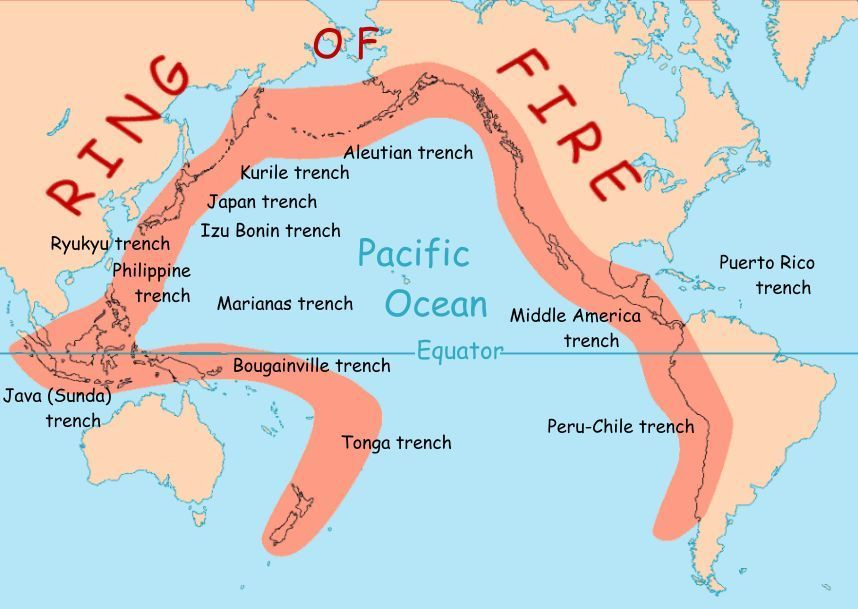
- Other Major Volcanoes of Indonesia:

